If you have ever written an obituary, you'll know it is both an honour and a responsibility to capture a life in 1000 words.
I've written my fair share over the years and always feel the weight. But I always learn something about the person whose life is being marked. It’s both an honour and a responsibility.
People’s lives are made up of hundreds and thousands of stories. And scooping these stories up to write about a life is an exercise in judicious editing. You have to find the stories which will dance around the facts and paint a truthful picture of the person.
With every obituary I write, I am reminded how fleeting life can be.
The Romans had a name for this. Sic transit gloria mundi. Thus passes the glory of the world.
I found myself writing an obituary for an artist friend, Liz Knox, in the period in between Christmas and New Year. Liz died after a long and challenging battle with cancer on 22 December.
My last phone call with her a few months earlier had been a fraught one. She was anxious and scared; trying to find a doctor who could push the boat out for her and wondering if I had any contacts. I felt pretty useless, truth be told.
That story alone tells you a lot about Liz Knox, who was a bonnie fechter (Scots tr: an intrepid fighter, a disputatious person).
Liz was not one to let a thing lie. If there was another way, she'd try to find it. She was an original; a one-off, as all true artists are.
To prepare for writing the obituary, I talked to Liz's husband Peter, her granddaughter, Mairi and our mutual friend, Charles Jamieson.
Liz’s husband Pete texted me late one night to tell me that Liz wore a ‘vermillion’ coloured dress at their wedding in Paisley Abbey.
My internal ‘that’s the image to sum Liz up’ bell rang instantly. Mairi sent me a photograph. See below. How beautiful is Liz? My first thought was… wow, I bet that set the tongues a-wagging in the douce town of Paisley.
Mairi, who is a musician and a journalist, wrote the following post on social media about her grandmother on Christmas Day. I only discovered it after my obituary was published and, to be honest it sums up the essence of Liz. Much more than my formal prose.
My granny always asked me to call her Liz as she didn’t identify as a “granny”. Her fashion, curly red hair, profession and demeanour, for the most part didn’t scream “grandma”.
This holiday season has been very difficult and strange for us.
If we are close, you know my granny: a well-known Scottish artist and fashion icon (my opinion). Outspoken in both politics and social injustices.
Introducing me to books, ballet and opera at a young age and encouraging my siblings and I into the arts. I ended up mostly engrossed in dark Russian novels.
When trends circled back, I was sent editions of vogue she kept from the 70s, 80s, 90s, 00s.
Even my wardrobe is made up roughly half of her clothes.
She taught me how to do my makeup for my face shape, she told me how I looked - bad or good. We even have the same glasses frame.
At 21, we spent hours in House of Fraser’s trying to find my signature scent, l’eau d’Issey or Chanel no.19.
I really wanted to tell her Chanel no 19 smells different these days. I’ll treasure the last bottle she got me.
Yeah, we fought or bickered but what friends or family don’t?
We talked almost daily and had a very normal conversation less than a day before she passed.
I’m trying to gather the strength to help write her obituary for The Herald so as you can imagine my head has been a mess. I keep crying and I know she’d tell me to stop being “so silly” and just write.
I’ll try, granny.Liz Knox: 1945-2024. Rest in peace.
Researching Liz’s life, it also became crystal clear that her deep connection with colour came from a scientific, as well as an instinctive creative place.
She always wanted to go to art school, but her father (a mild-mannered man in all other respects, according to Liz’s husband Pete), wouldn’t sign the papers for her application to go to art school.
The Knox family lived in Paisley, then a thriving centre of industry centred around the thread and carpet factories which employed so many people.
Realising she’d have to wait until she was 21, when could sign the papers herself, Liz left left school at 15 and became a lab technician with James Anderson (Colours) Ltd in Paisley. Her duties there included colour matching, testing inorganic pigment for use in paints, dyes and printing inks and calculating and adjusting pigment recipes.
Talk about going deep into colour.
After three years, Liz moved on to work in Paisley-based J&P Coats' research laboratory, where she became fascinated by both computer programming and colour physics. In the evenings she studied the science of colour and also attended classes at Glasgow School of Art to build up a portfolio. In 1967, she began her studies at Edinburgh College of Art.
All of this, and her love of a good red lipstick, speaks volumes about Liz.
Obituaries, like lives, always have a certain form; an arc.
What I didn't say in her obituary, but what is important to me, is that in 2012, Liz and I organised an exhibition called Glasgow Haiku. It came hot on the heels of another exhibition we were both involved in a couple of years earlier called The River Runs Through It. For this show, organised by Charles Jamieson, a host of Scottish artists were invited to respond to Zaha Hadid's newly-built jaggedy transport museum, the Riverside Museum.
Their work was duly hung in Kelvingrove Art Gallery in Glasgow, with funds raised going towards the Riverside Museum Appeal. It was a magical experience to be a part of.
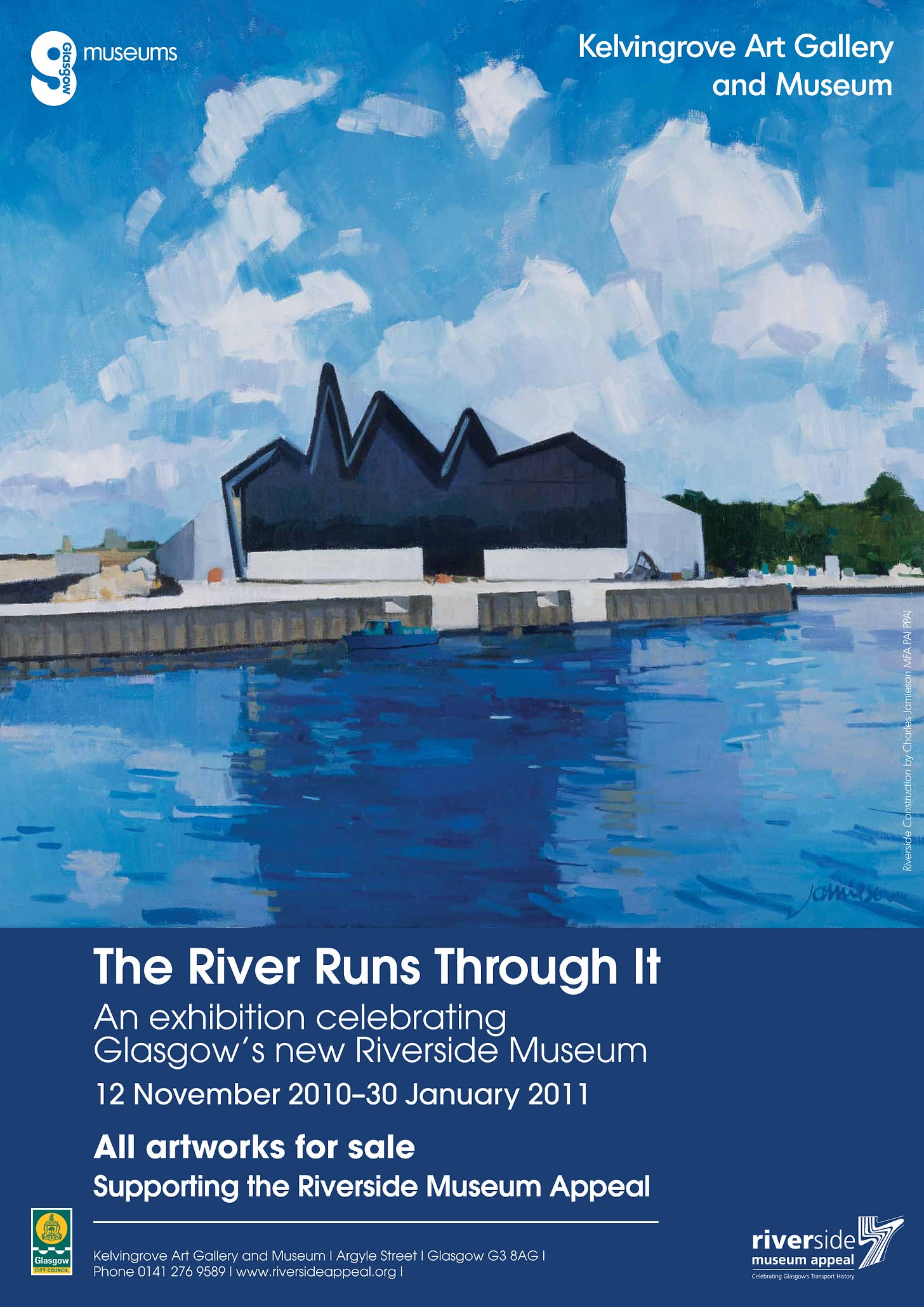
As Charlie says, Liz always loved to rise to the challenge of a theme. One day, a few months after the Kelvingrove show, my phone rang. It was Liz. Would I like to help organise another exhibition, inviting a dozen artists from the Kelvingrove show to exhibit at Glasgow Art Club on the theme, Glasgow Haiku?
My poetry antennae started to twitch. Like me, Liz was a poetry lover and her idea was that in writing a 17-syllable haiku verse for each of their works, another conceptual layer would be added to the flat surface of a drawing or painting.
Glasgow Haiku turned out to be a joy and a half. The Herald's poetry editor, Lesley McDowell wrote at the time that all 13 artists (yes, I was number 13) had 'risen to both the literary and artistic challenge', adding:
"Perhaps articulating in words what they were aiming at instinctively with paint has added an analytical edge to their endeavours. The result, in any case, is a vivid and varied portrait of the city."
Liz encouraged me to be part of the show. At first I gave it the 'but I'm just the journalist who writes about exhibitions,' chat, but Liz was having none of it.
So, mainly during my daily dog walks in the wood, I started jotting down haikus on my phone and taking photos. I would count out the formulaic 5-7-5 syllables on my fingers when I was out walking or driving the car. The kids used to know when I was composing a haiku because I'd drum out syllables on the steering wheel. Reader, I wrote a haiku a day for a year. It was my wee secret creative thing which made me think maybe, just maybe, I could do more than write about other people's creative lives.
I have Liz, ever the encourager and enabler, to thank for that.
The resulting Glasgow Haiku exhibition brought out the best in everyone. I contributed three framed iPhone photographs enlarged by a photographer friend to a decent size. My favourite one was Velvety Thistle, written in the dog days of late summer/early autumn 2012.
I know where you are
Softly, softly, I find you –
Velvety thistle
Liz's painting was, as always, an essay in carefully balanced colour and composition.
here waiting watching
reflecting on the river
and remembering
Annette Edgar's celebration of Glasgow night life was, as always, poetic and perfect.
Moon to morning
party animals blaze
stag and hen
Alasdair Wallace carried off his usual pictorial party trick of making you laugh as you wonder how his brain conjured this scene out of nowhere. Also, it's so Glasgow.
YOU MISUNDERSTAND
EVERYONE LOVES EVERYONE
NO ONE LIKES YOU BUT
When I was rooting around what I loosely call my 'archive' of images, assembled over 15+ years writing about the Scottish art scene, I found a digital copy of Liz's painting for A River Runs Through It in Kelvingrove in 2010.
The title? Sic Transit Gloria Mundi.
Lives are so much more than words on a page. Or paint inside a frame.



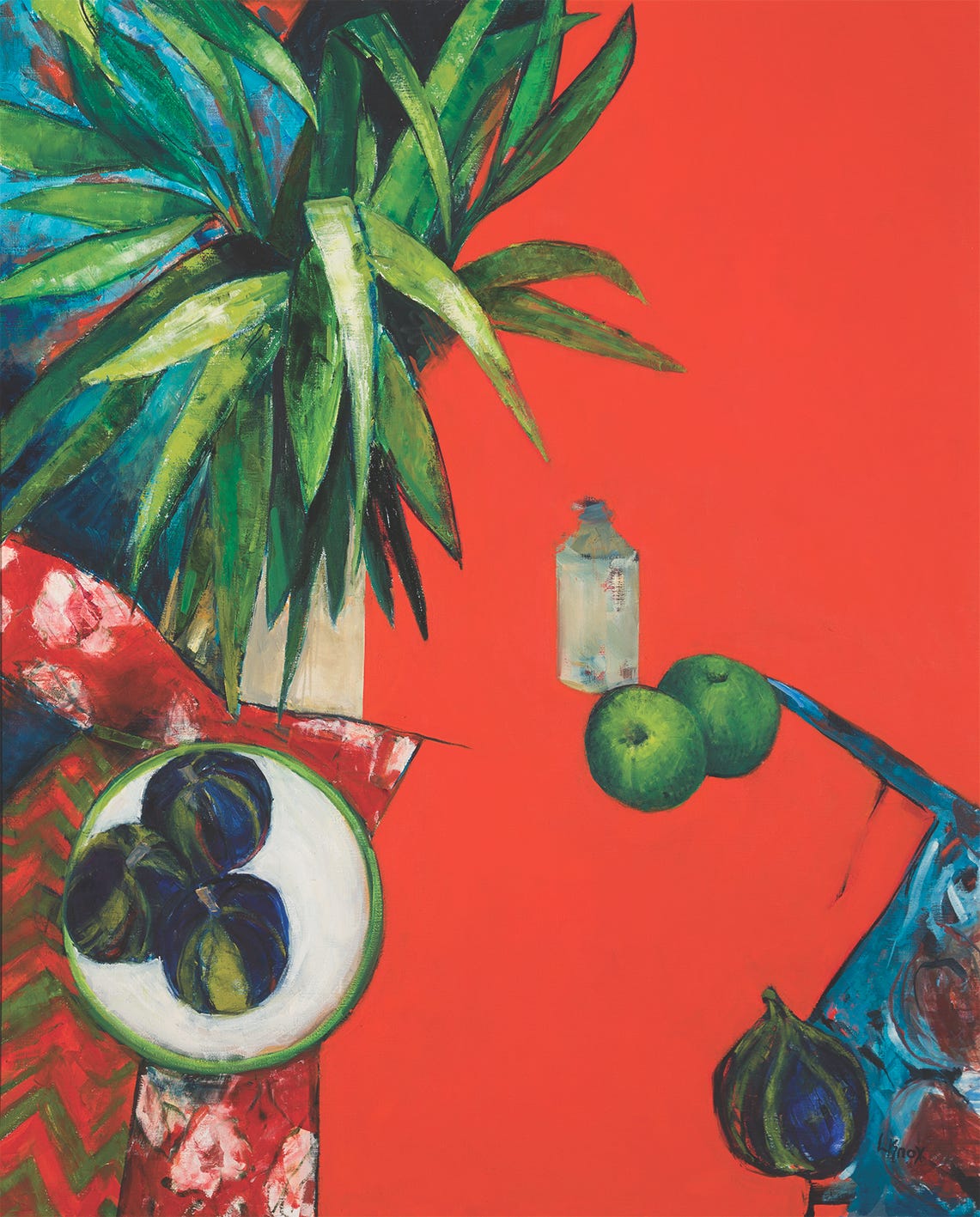


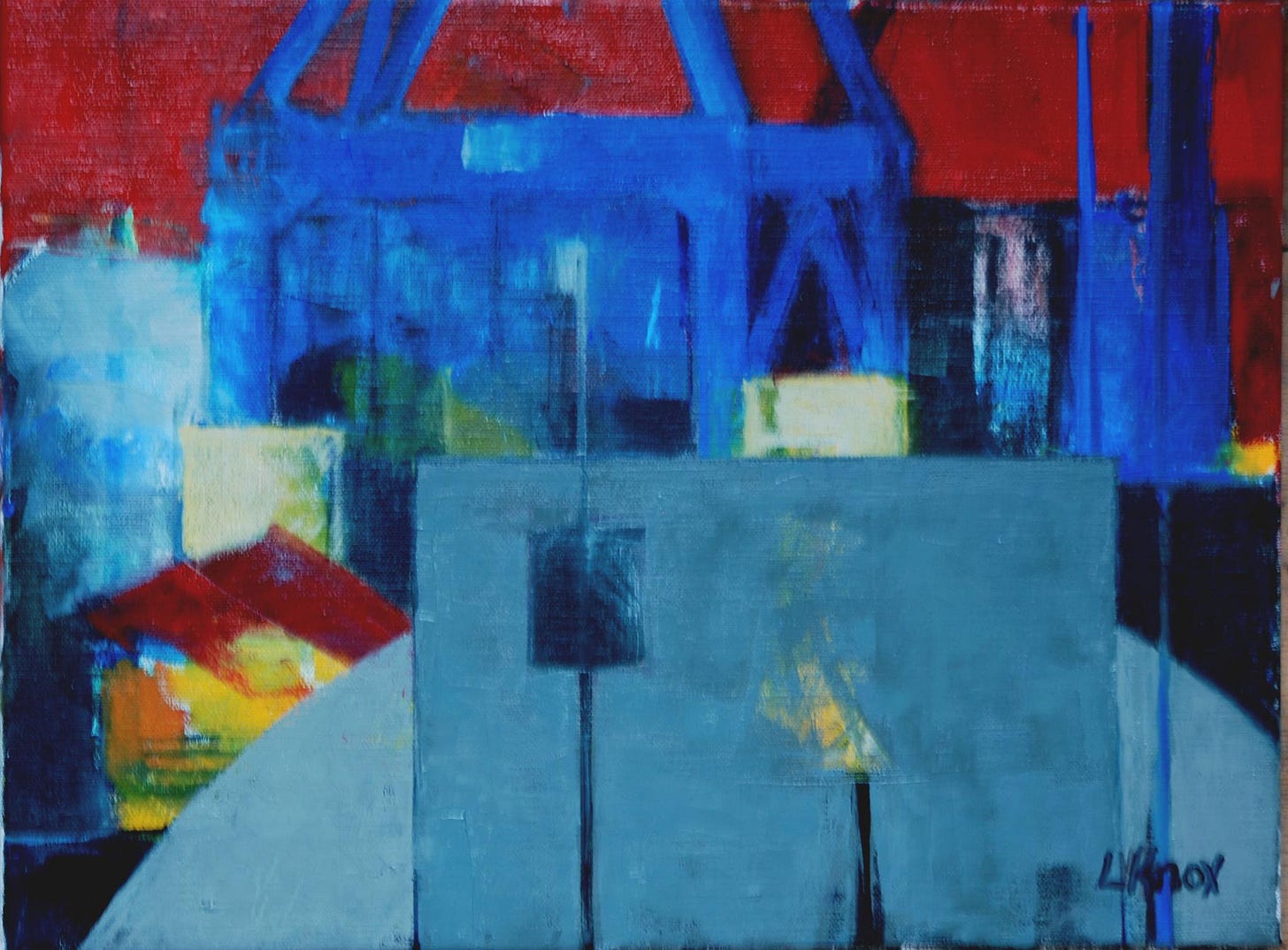
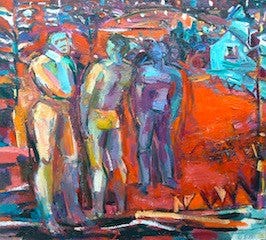
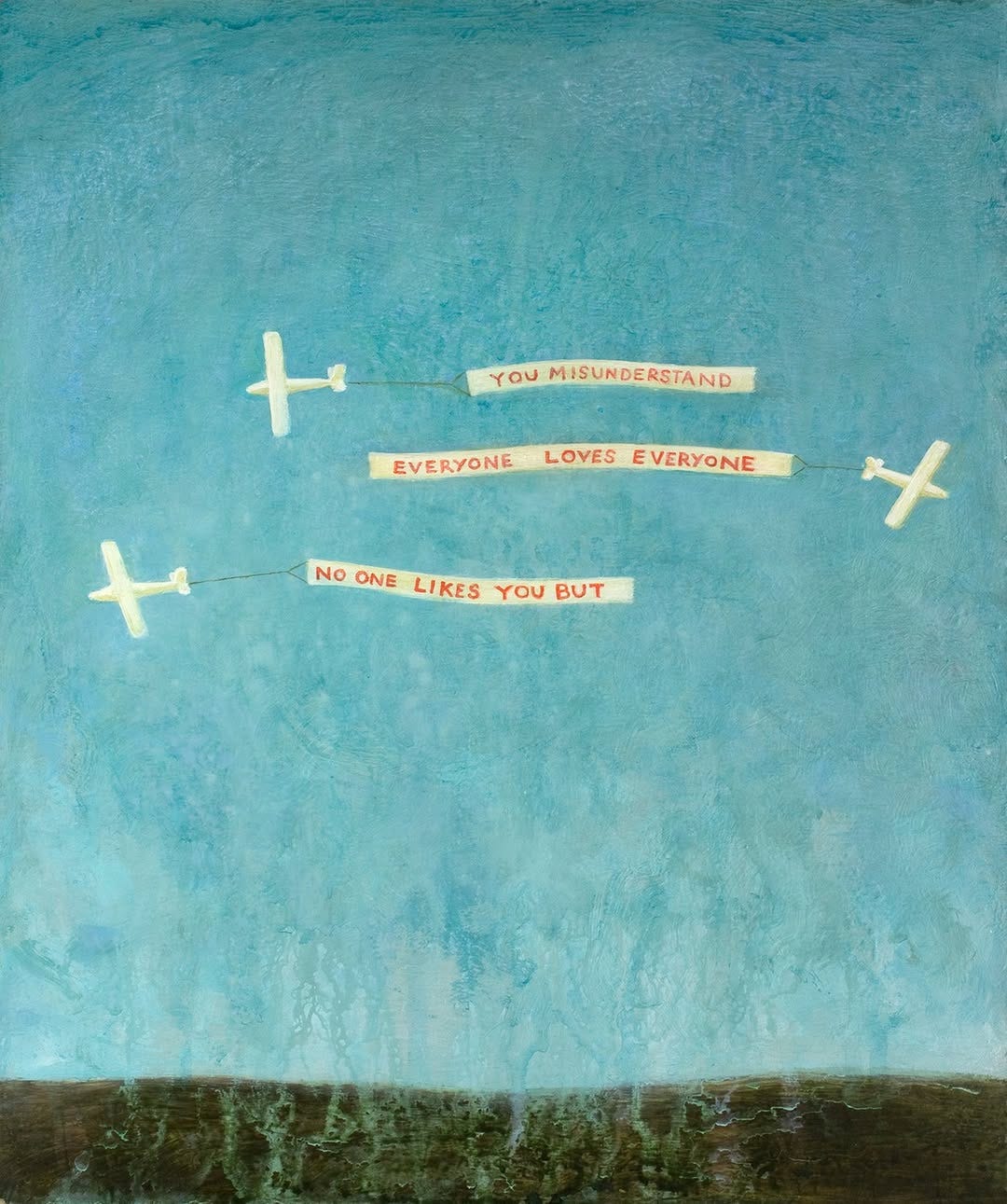
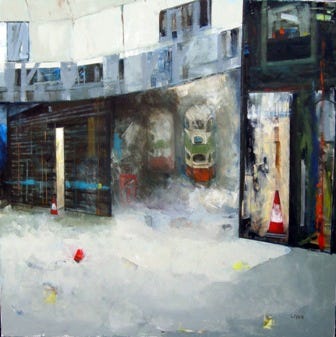
Thanks, Jan....a caring poignant tribute to Liz and such well-matched art and poems. A treat indeed